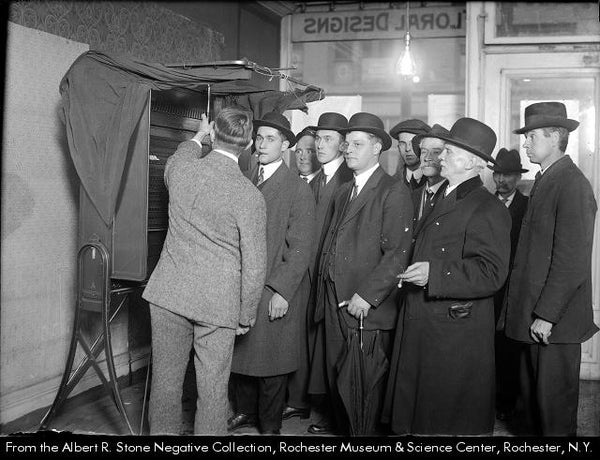Yesterday was Election Day, an important time when we get to exercise our right to vote for the people who run our towns and country. More than 200 years ago in 1789, the first presidential election was held in the United States. A lot has changed since then in politics, in the country, and even in the way that we vote. Voting used to be documented and counted by hand which was a very long and tedious process especially as the country began to expand to new territory and the population rose. Many inventors looked for new ways to document and count election information that would make the voting process easier, quicker, and less prone to inaccurate or dishonest vote-counting.
In 1889, Herman Hollerith patented a punch card method for compiling US Census data. This system was not used for voting at the time, but the technology piqued the interest of inventors interested in creating better data-collecting systems. Finally, later that year, over a century after the first US election, Rochesterian Jacob H. Myers patented the design for the first mechanical lever voting machine. The machine became known as the Myers Automatic Booth, and fixed many of the issues that occurred with previous voting methods. The machine’s design prevented overnotes (when two or more candidates are selected for a race that allows only one vote), sped up the counting process, and reduced the amount of inaccurate or dishonest vote-counting because the machine itself did the vote-counting. Also, since the voting machine had a curtain that gave the voter more privacy while voting, this protected poor, immigrant, and working class voters who were more likely to change their vote due to voting intimidation.

(from the Monroe County Library Database)
In 1892, the first Myers Automatic Booth was used in an election in Lockport, New York. Upon the first successful use of the machine, other surrounding areas took note and looked to use voting machines for their next elections as well. Rochester looked to be the first American city to install the machines citywide, but after the election it was discovered that some machines lost dozens, maybe hundreds of votes. This obviously distressed the citizens and candidates of Rochester and resulted in legal action being taken against Myers’ company. After the upset, the board of directors fired Myers and liquidated the business.
Although Myers may have ultimately seen his invention as a failure, the voting machines that came to be after the downfall of his company are directly based on his original invention, and went on to be used in almost every major US city in 1930. The mechanical voting machines reign was long, but due to new technology and the 2000 presidential election’s hanging chad controversy, many cities are now using digital modes of vote collection, but even so, in 2013 New York City decided to switch back to mechanical voting machines due to a miscount in their digital system.
It’s important to remember that not all failures are worthless. Failure is a useful tool in the creative process. It helps you understand the issues in your creation and always leads to something better down the line. We learn from our failures and improve upon them. Although Jacob H. Myers may have gotten a raw deal for his failures, it led to the most successful voting method this country has ever seen. And for that, Mr. Myers, we salute you.

(from the Monroe County Library Database)
Have an invention that you want to share with the world? Consider taking our upcoming class about launching a start-up in Rochester.
(Myers's Automatic Booth sources: Historical Timeline: Voting Machine, RocWiki: Voting Machine, RocWiki: Jacob H. Myers)
